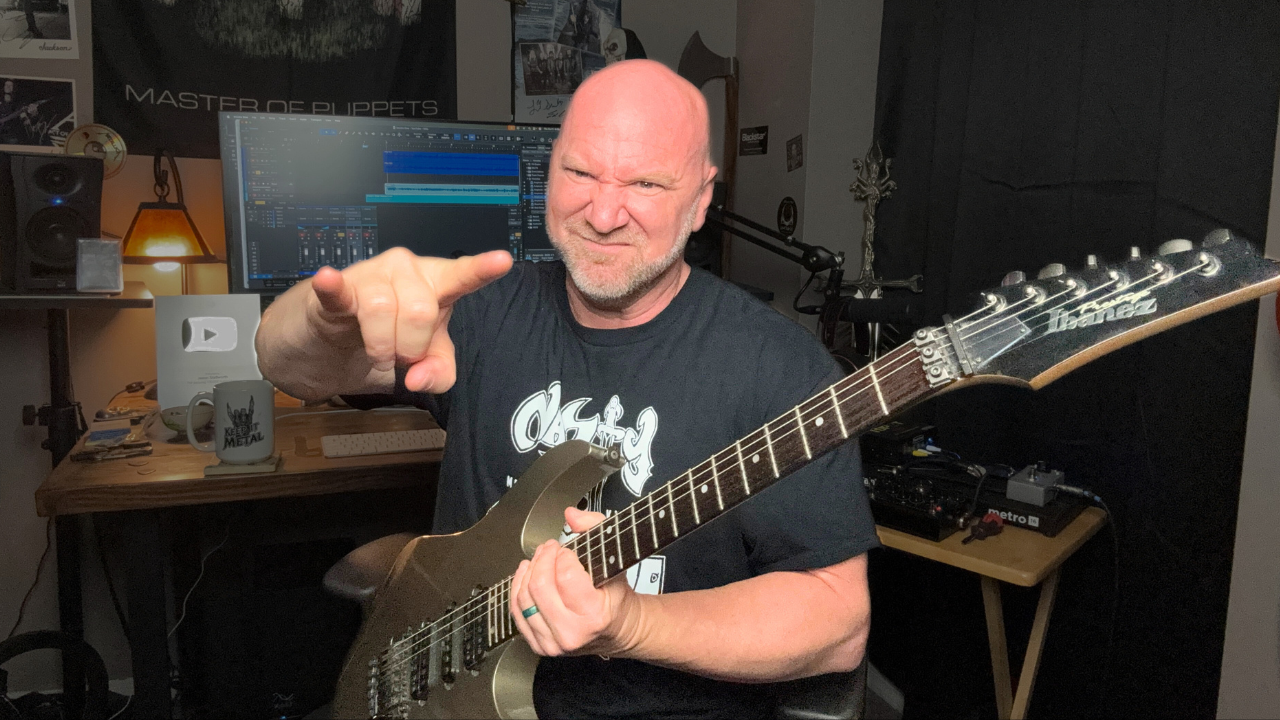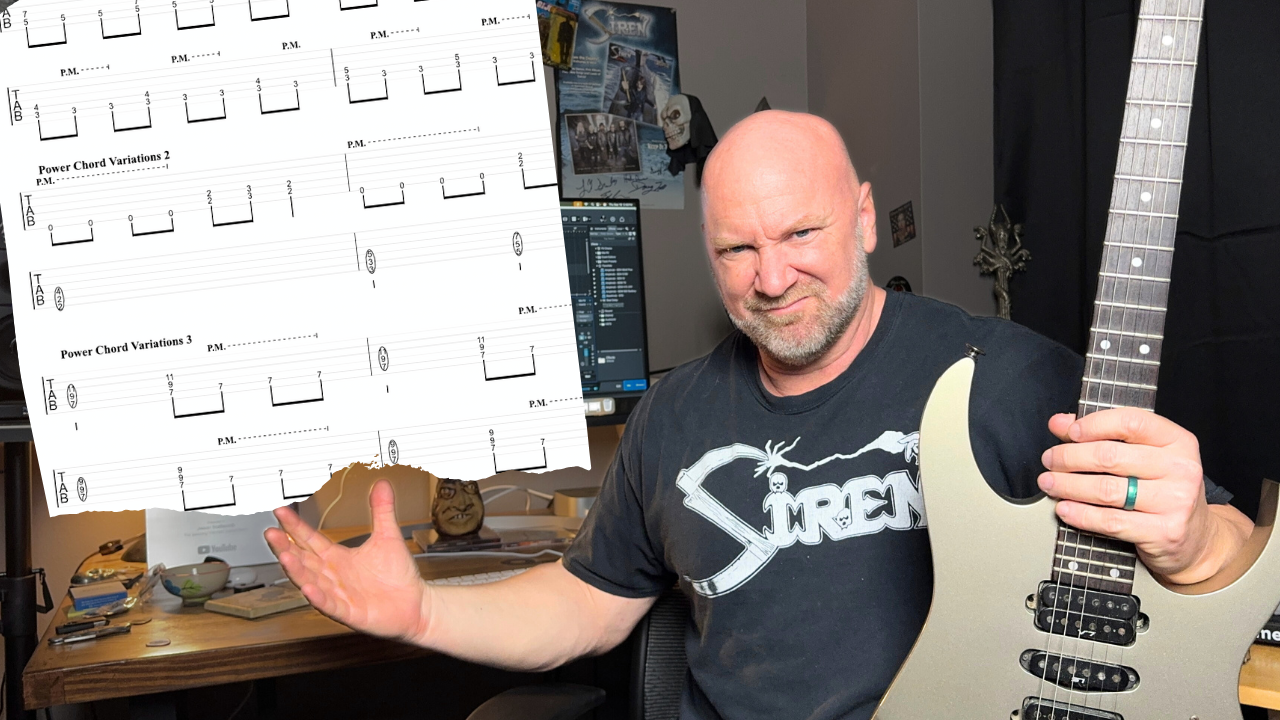Updated for 2025: This post now includes fresh insights on how bass ties into metal riffs and rhythm guitar — plus links to resources that’ll help you improve your bass and guitar playing.
Many guitar players assume they already know how to play metal bass guitar. In fact, those same guitarists assume bass is easier.
You’ve probably heard things like: “Bass is just the first four strings of a guitar!”
If they only knew how off that sounds. But hey, I’ll admit it — I used to think the same way. Maybe you do, too (don’t worry, I won’t tell anyone…just keep reading 🤘).
The truth is that bass is a completely different instrument than guitar. Sure, the notes overlap. But any good metal bassist knows bass is far more than just notes — it’s the groove and foundation that makes heavy riffs hit harder.
In this post, I’ll show you how to play bass without sounding like a guitarist trying to play bass.
You’ll also learn the 3 biggest mistakes guitarists make when they switch to bass — and how to avoid them so you can lay down solid, heavy bass lines that actually drive your songs forward.
👉 Want riffs and exercises that actually help you grow as a player? Grab my free Metal Riffs & Licks
The Purpose of Bass Guitar in Metal Music
The bass plays a specific role in music — and especially in metal — that no other instrument can replace.
In a metal band, the bass lines are what glue everything together. They fill the empty spaces you’d hear without them, and they give weight to the riffs you’re already playing on guitar.
Daniel Herber explains the role of the bass guitar perfectly here:
The role of the bassist in a band is the sonic link between the rhythmical and melodic elements of any band. With drums, it provides the backbone. In addition, the traditional function of the bass guitar is to flesh out any bands’ sound. By being played in such a way that the percussive elements of the instrument reinforce and supplies power and groove.
‘The Role of the Bassist in a Band’ by Daniel Herber, April 19, 2010, guitarexcellence.co.za
You see, the bass guitar is a powerful instrument — and in metal, it can be the difference between a weak mix and a crushing wall of sound.
The bass doesn’t just sit in the background. It makes everything else sound tighter, heavier, and more professional. It’s the part of the rhythm section that drives the song and carries that bottom end that metal is known for.
3 Mistakes Guitar Players Make Playing Bass
Now let’s talk about the most common mistakes guitarists make when they switch over to bass — whether you’re jamming in a garage band or recording your own metal bass tracks.
👉 You can also watch the full video here (then keep reading for more in-depth detail):
Mistake 1 – Don’t Play Every Note the Guitar Plays on Bass
One of the biggest “newbie” mistakes guitar players make on bass is thinking they need to play every single guitar note.
This is one of the worst things you can do in metal music. When the bass just copies every riff, it usually makes the mix sound muddy and actually weakens the song.
The problem is that you lose what the bass is supposed to be doing:
- Driving the rhythm section
- Supporting the drums
- Adding low-end power instead of clutter
Sure, there are times when guitar and bass sound amazing in unison — think classic thrash riffs where everyone locks in together. And yes, you can absolutely riff on the bass. But not every time the guitar does.
👉 The key: Focus on what sounds best for the song. Sometimes that means locking in with the guitar, and sometimes it means stepping back and playing those driving notes that keep the groove alive.
Mistake 2 – Not Playing Enough
On the flip side, some guitarists don’t play enough on bass.
A perfect example: when the guitars are just holding out a power chord. That’s your moment to add movement. A little run or riff on bass can give the song punch and keep the rhythm section exciting.
Another spot? Transitions. Going from verse to chorus with just two chords? That’s a great place to throw in a run or short scale passage to connect the sections and make the transition feel bigger.
Remember: the bass isn’t just background. It’s what keeps the energy flowing between sections of a metal song.
👉 This kind of rhythm-and-bass interplay is exactly what I break down in my lessons. If you want tabs, tracks, and step-by-step guidance, check out the Jason Stallworth Guitar Academy
Mistake 3 – Assuming You Must Play with Your Fingers
A lot of guitarists think there’s only one “right” way to play bass. That’s just not true.
Yes, many legendary bassists play with their fingers. Robert Trujillo, bassist for Metallica, explains why he plays with his fingers on the Ultimate Guitar website in his article ‘Robert Trujillo: Why I Play Bass With Fingers.’
But there are also phenomenal metal bassists who play with a pick. Megadeth’s former bassist Dave Ellefson described on Blabbermouth why he plays with a pick in the article ‘Megadeth’s David Ellefson: Why I Play Bass with a Pick.’
Both approaches are legit. The real answer is:
👉 Play however feels comfortable and natural to you.
Of course, challenge yourself to try new methods. But at the end of the day, it’s not about the method — it’s about what sounds good in the mix.
Don’t Leave the Bass Out of the Mix
As guitar players, we tend to focus too much on our riffs and solos in the mix. We always want the guitars louder — and heaven forbid the solo isn’t cutting through.
But in metal mixing, the bass guitar is just as important. If you bury it (like Metallica famously did on …And Justice for All), the entire song loses weight and punch.
Here’s a simple method I use to check my bass mix:
- Play your current mix.
- Mute the bass.
- Unmute the bass.
👉 If you don’t hear a big difference when the bass comes back in, it’s too quiet.
Beyond volume, most bass mix problems come from EQ and compression, not just fader levels. Often, it’s a frequency issue.
- Try boosting the mids (not just lows) to help the bass cut through.
- Add light compression to keep notes consistent.
- For heavy sections, experiment with a touch of overdrive or distortion. This can make the bass more present without stepping on the guitars.
The goal isn’t for the bass to dominate — it’s to sit perfectly in the mix so the whole band sounds bigger and tighter.
What About Metal Bass Solos?
By all By all means — throw in a bass solo from time to time!
The key is to remember that a metal bass solo usually sounds best when it leans into melody and groove rather than trying to copy a shredding guitar solo note-for-note. If you approach it like a lead guitar solo, it can end up sounding thin or out of place.
Instead, think of bass solos as another way to add atmosphere and drive to your songs. Use slides, melodic runs, or rhythmic ideas that showcase the low end in a way that feels natural.
I’ve done this in my own music:
- “Passing Through” (Masterpeace, 2019) – the verses are driven by bass guitar.
- “Never Enough” (Masterpeace, 2019) – features a bass solo at the end of the intro that transitions into the first verse.
👉 You can check out the full Masterpeace album here if you’d like to hear how I blended bass and guitar in a metal context – Listen Here
And of course, there are countless classic examples of metal songs with killer bass solos, like:
- Megadeth – Peace Sells
- Metallica – Anesthesia (Pulling Teeth)
Here’s a great video that compiles 15 awesome bass solos in metal history:
👉 The takeaway: Don’t be afraid to let the bass shine on its own. Just make sure your solo serves the song and fits the vibe, rather than competing with the guitars.
Final Thoughts on Playing Metal Bass
Switching from guitar to bass isn’t just about playing fewer strings or following the riffs. Bass has its own purpose in a metal band — driving the rhythm, locking in with the drums, and making the whole mix sound heavier and tighter.
If you avoid the common mistakes we covered — copying every guitar note, not playing enough, or limiting yourself to one technique — you’ll start sounding less like a guitarist dabbling on bass and more like a real bassist.
And once you get that mindset, everything about your music improves. Your riffs will sound tighter, your mixes fuller, and your songs will hit way harder.
🎸 Want more help leveling up your metal playing?
- Grab my free Metal Riffs & Licks
- Or dive deeper with full courses, monthly lessons, tabs, and tracks inside the Jason Stallworth Guitar Academy
The bass might not always get the spotlight, but when you play it with purpose, it’s the backbone that makes your metal guitar parts sound epic.
Keep it Metal,
Jason 🤘



